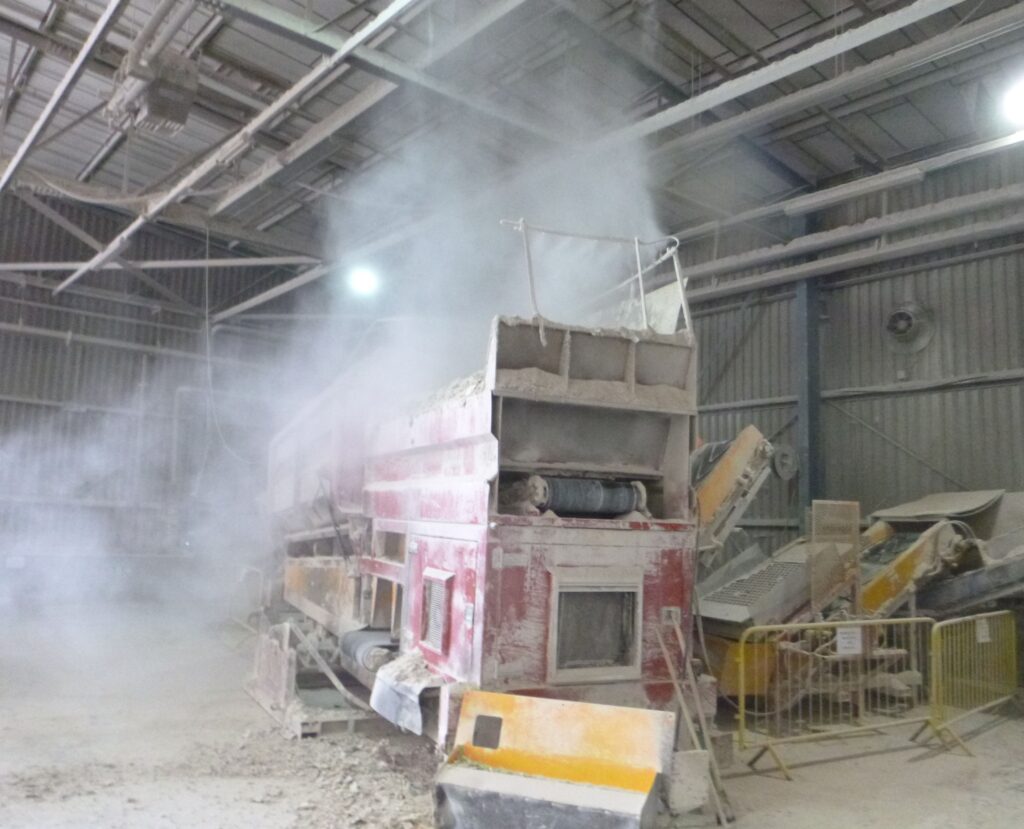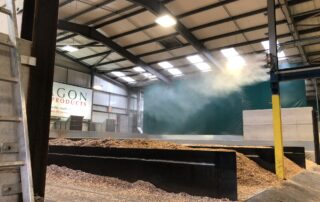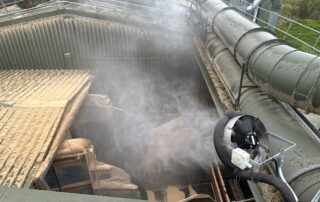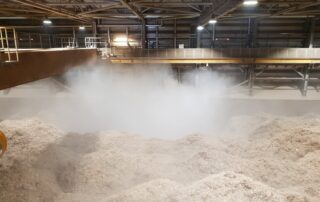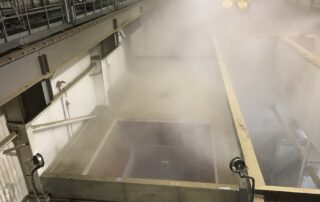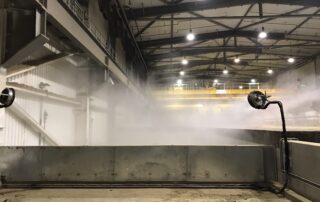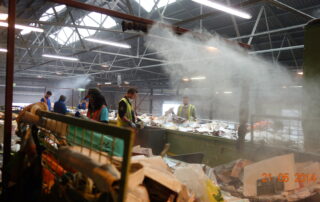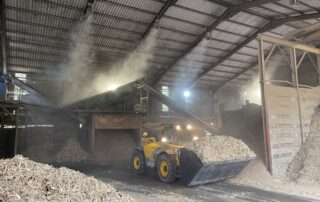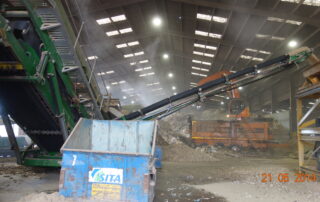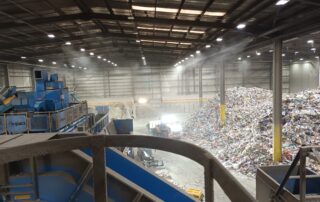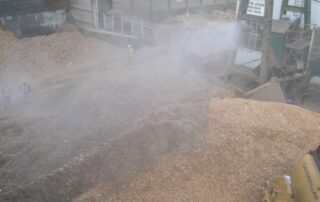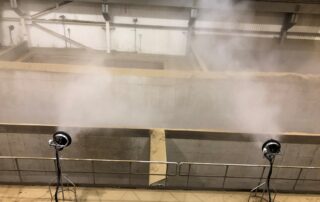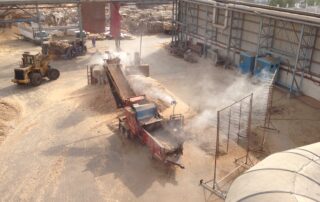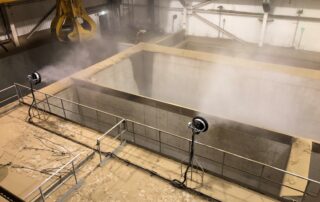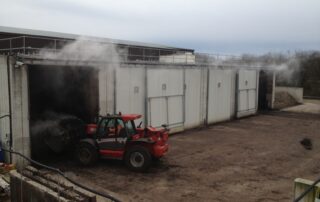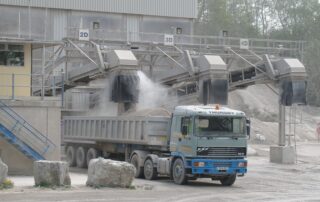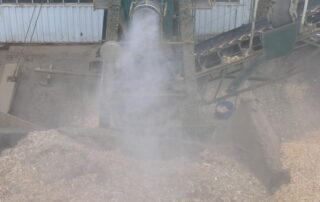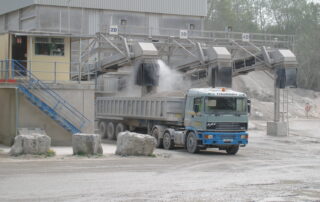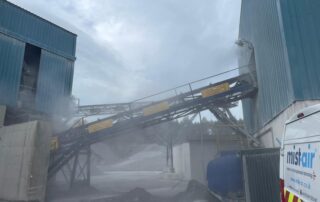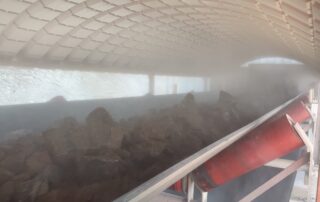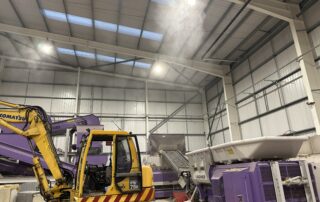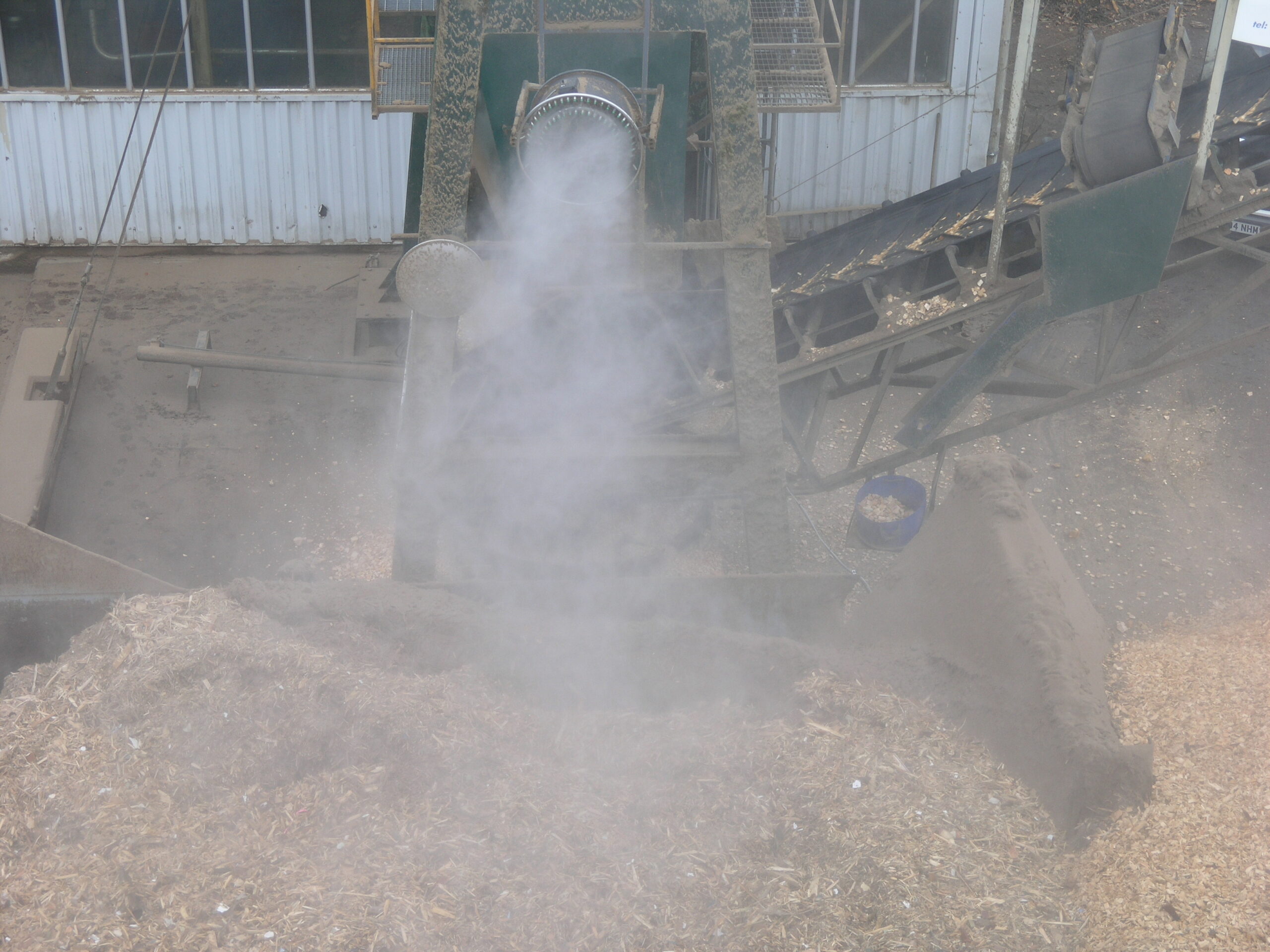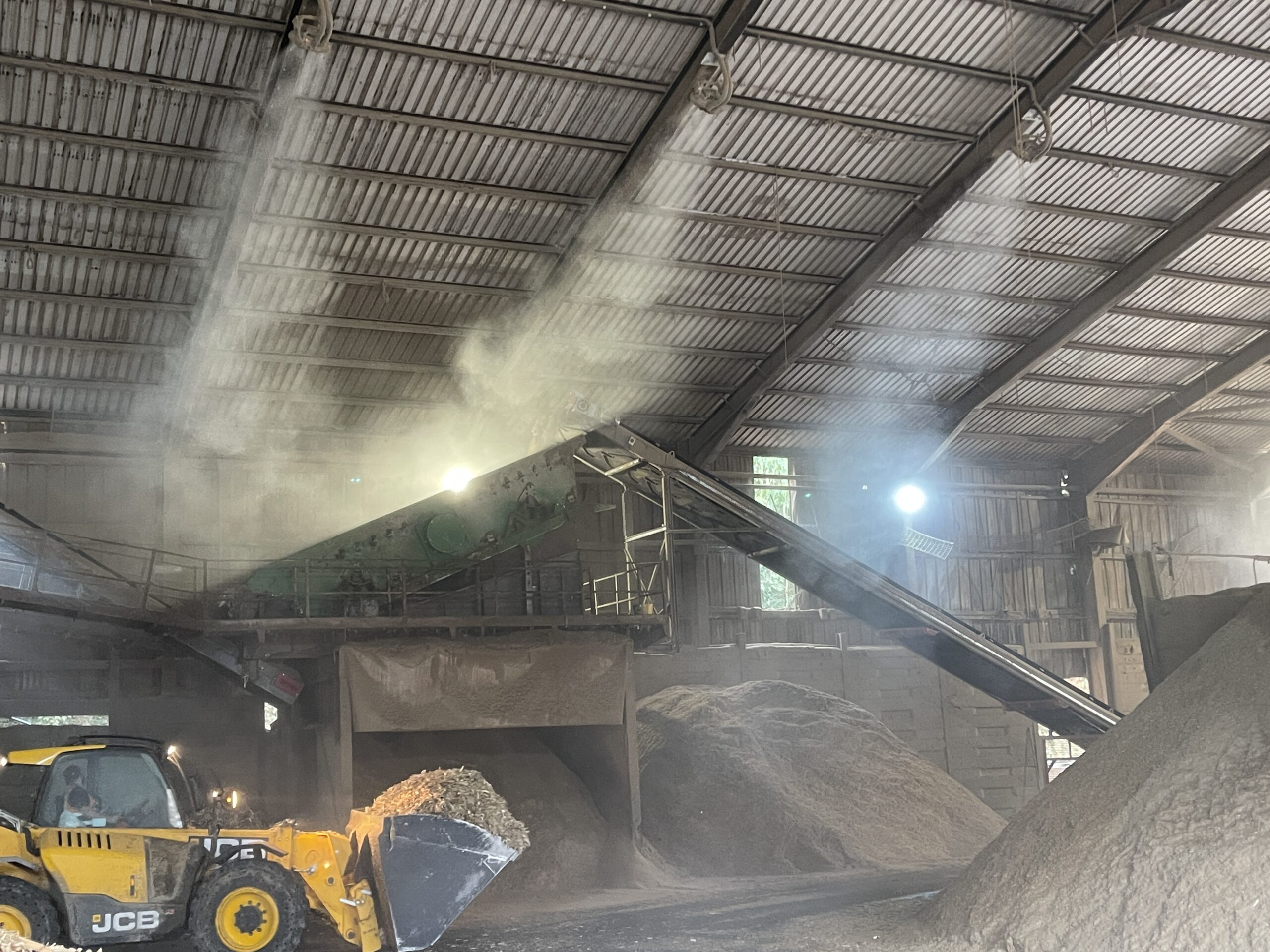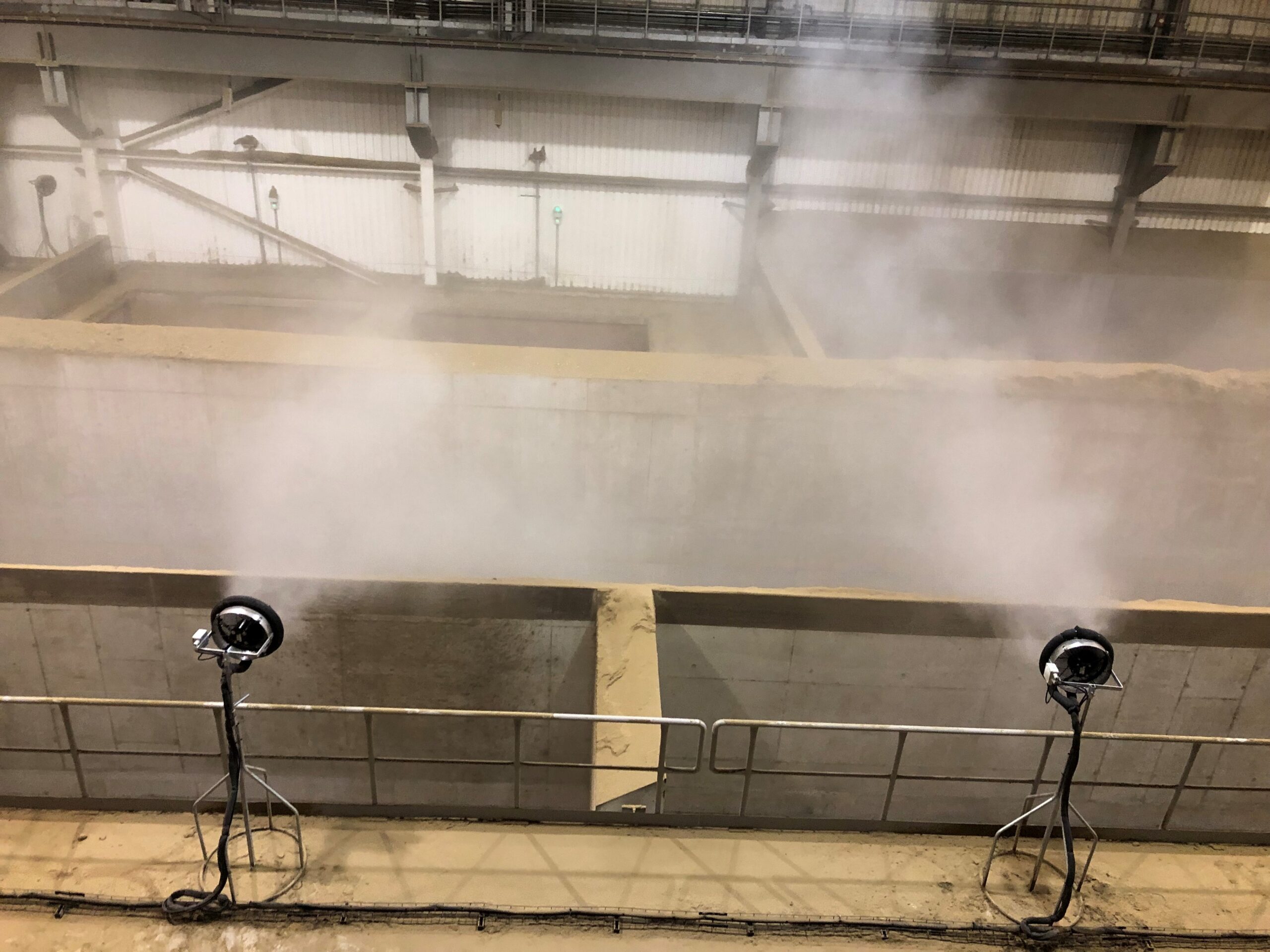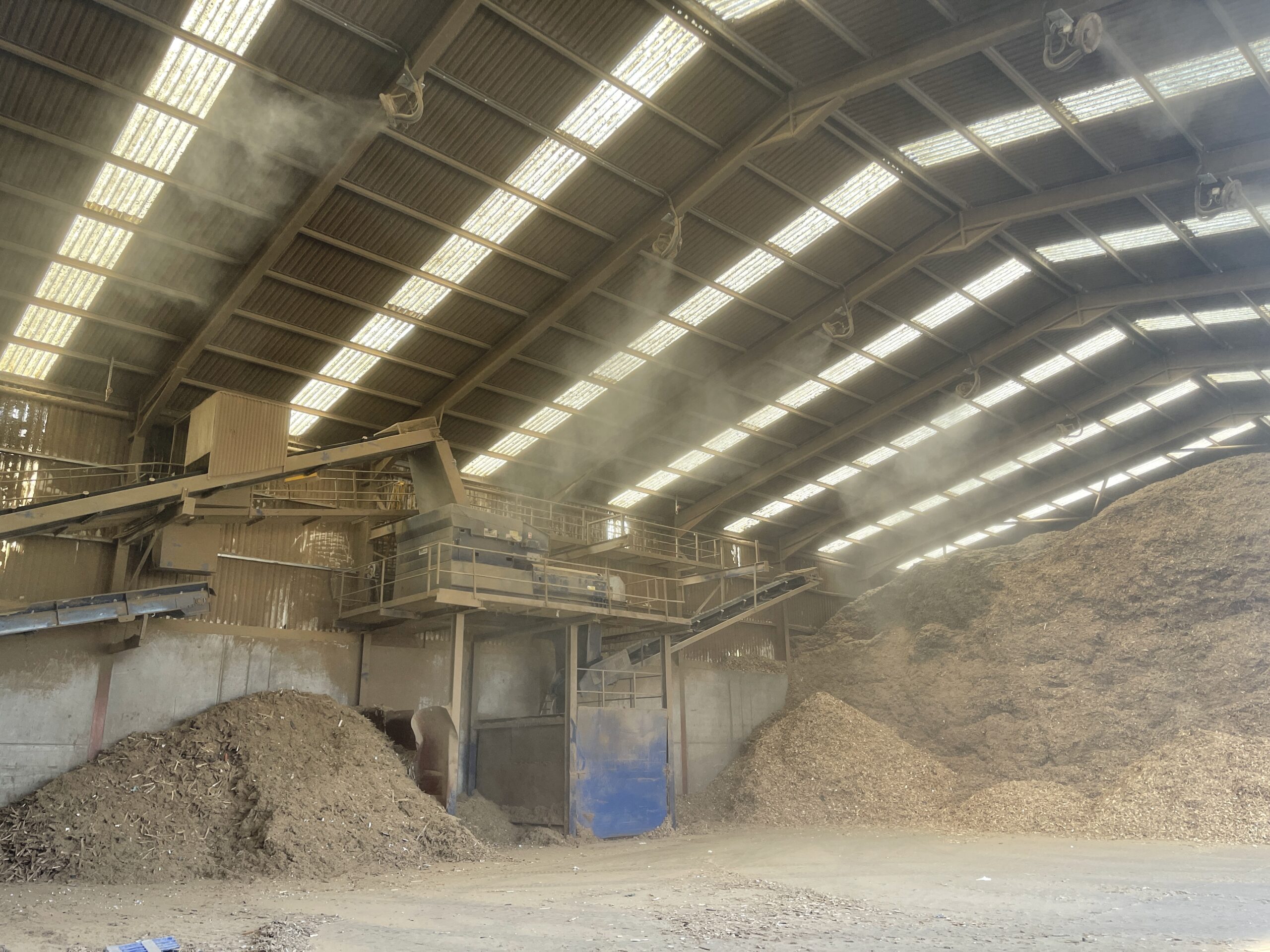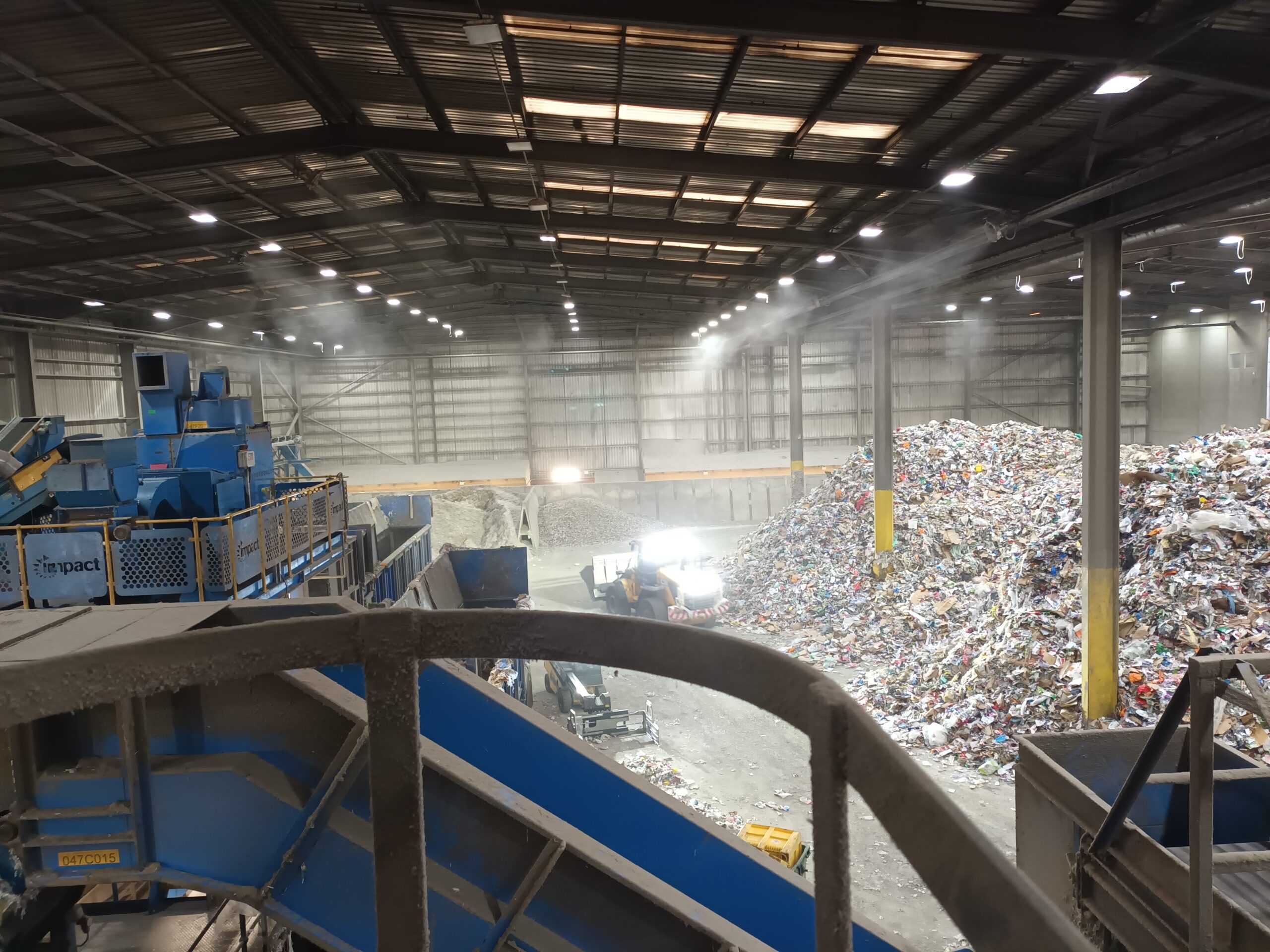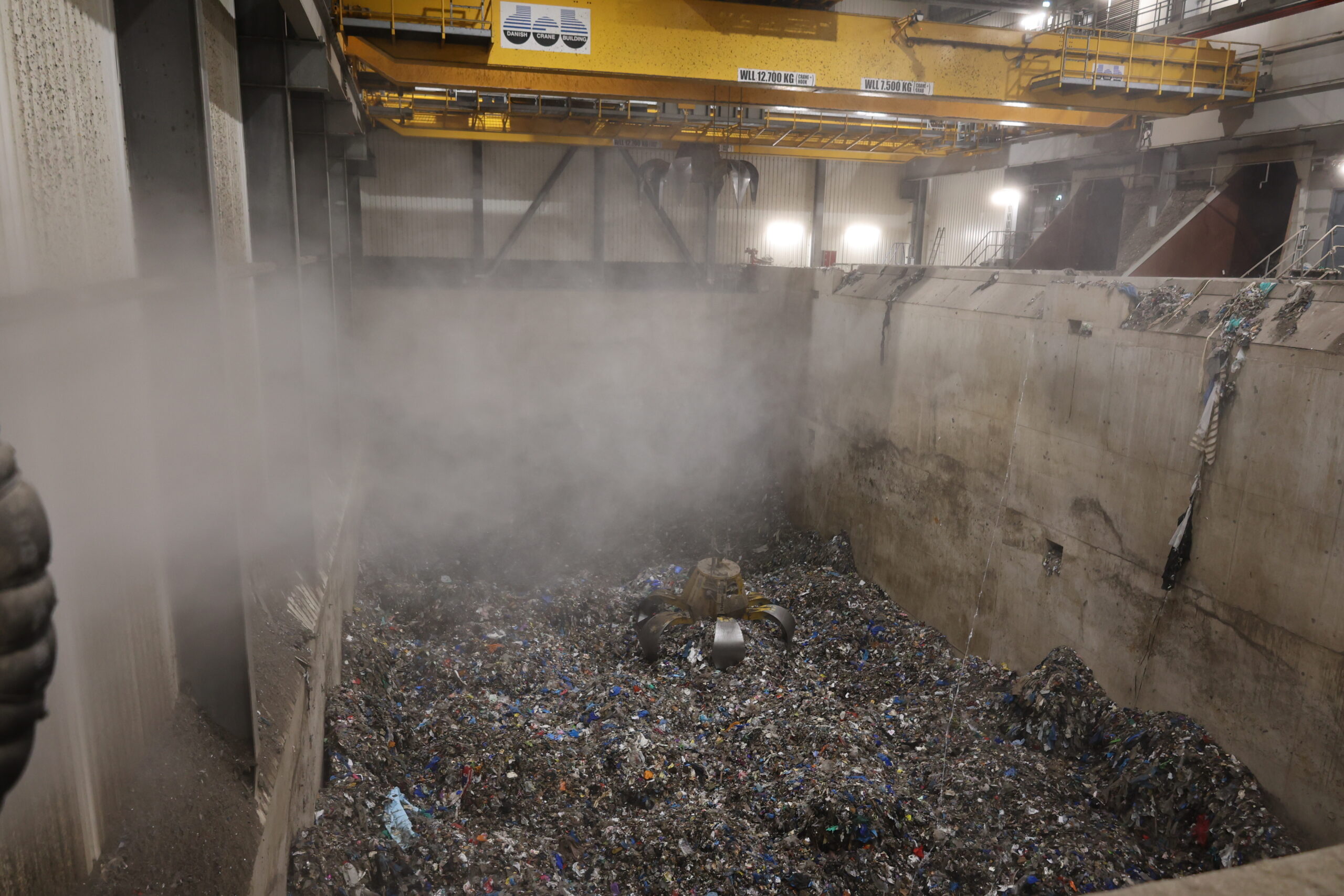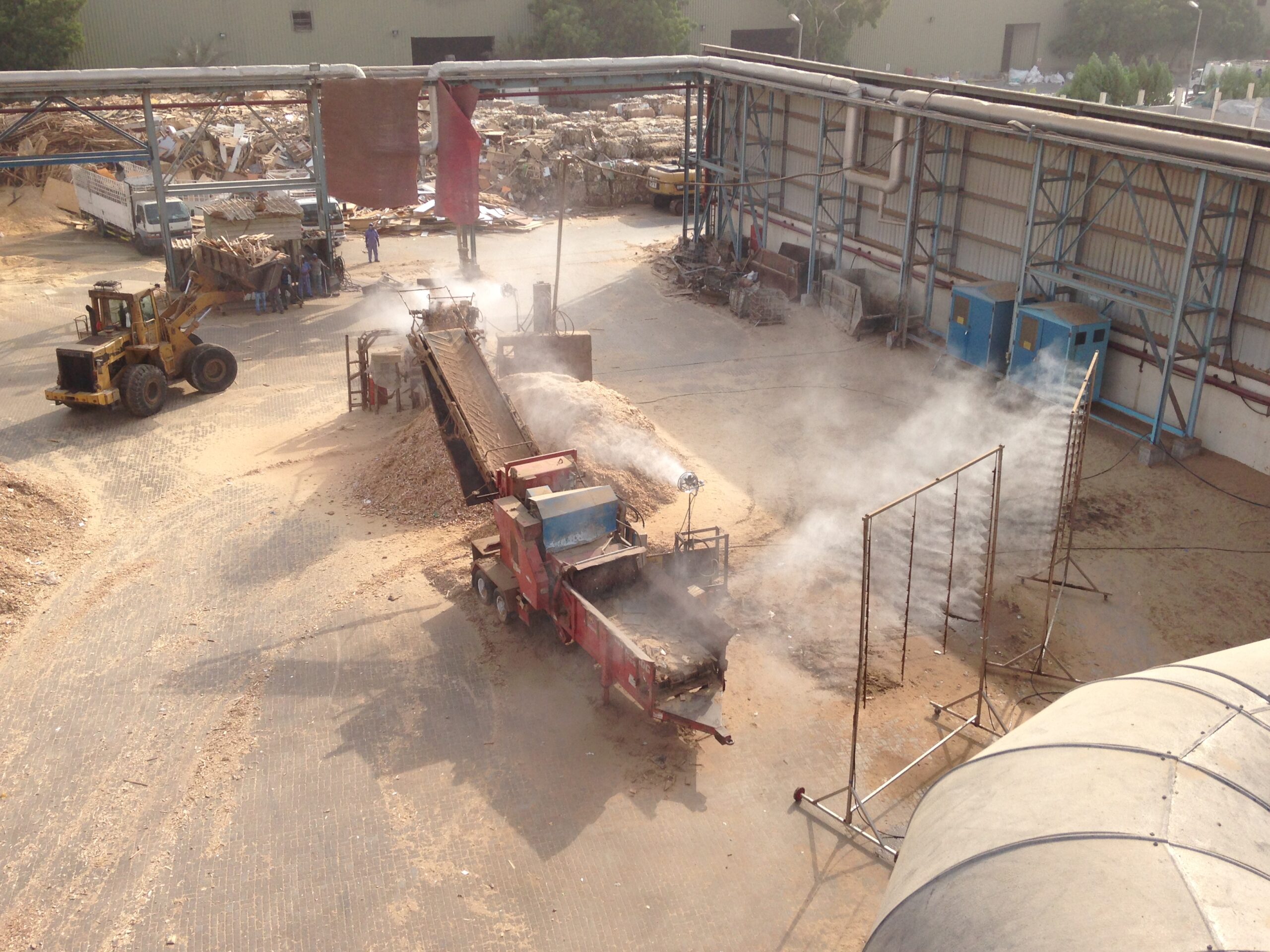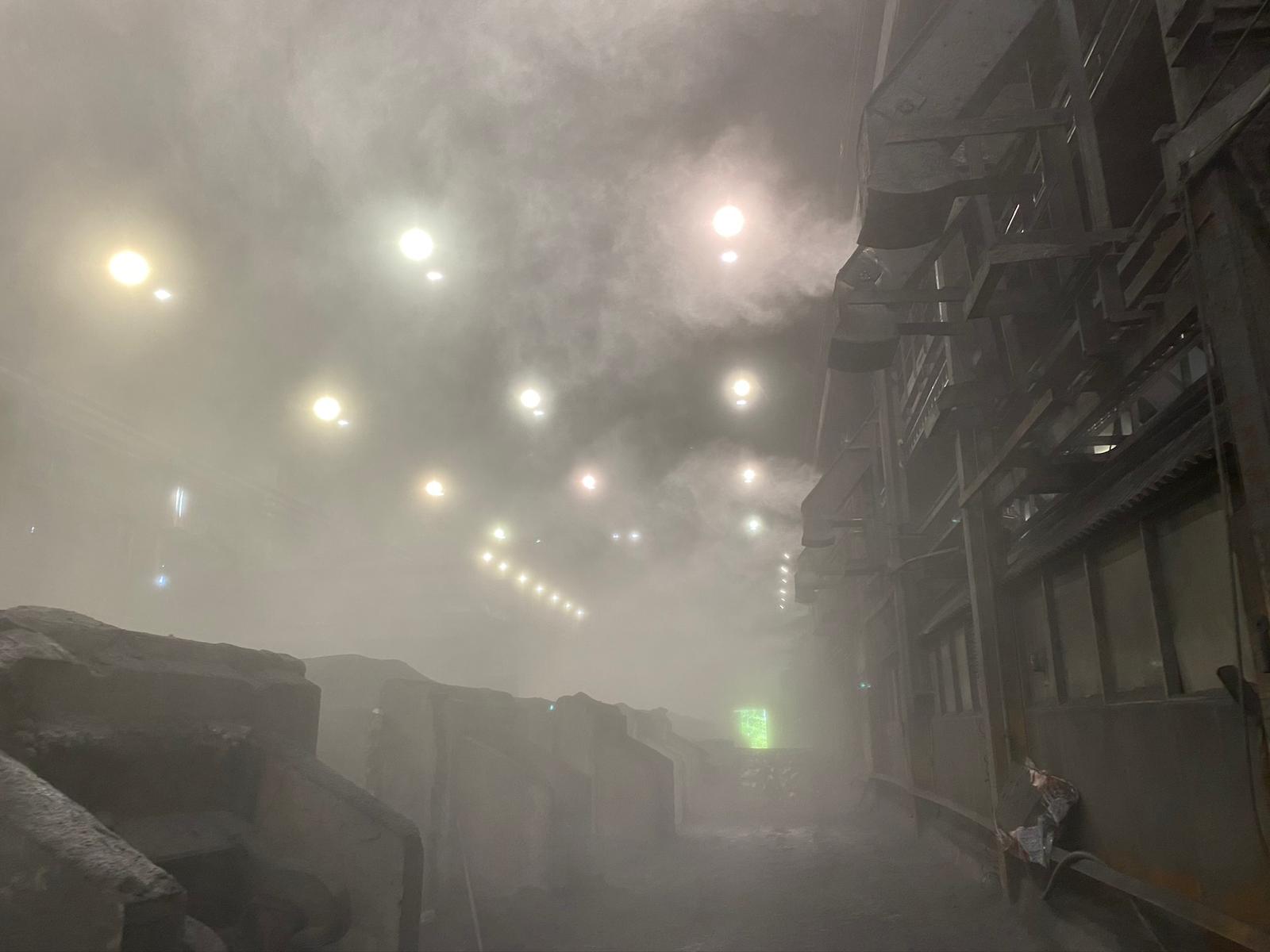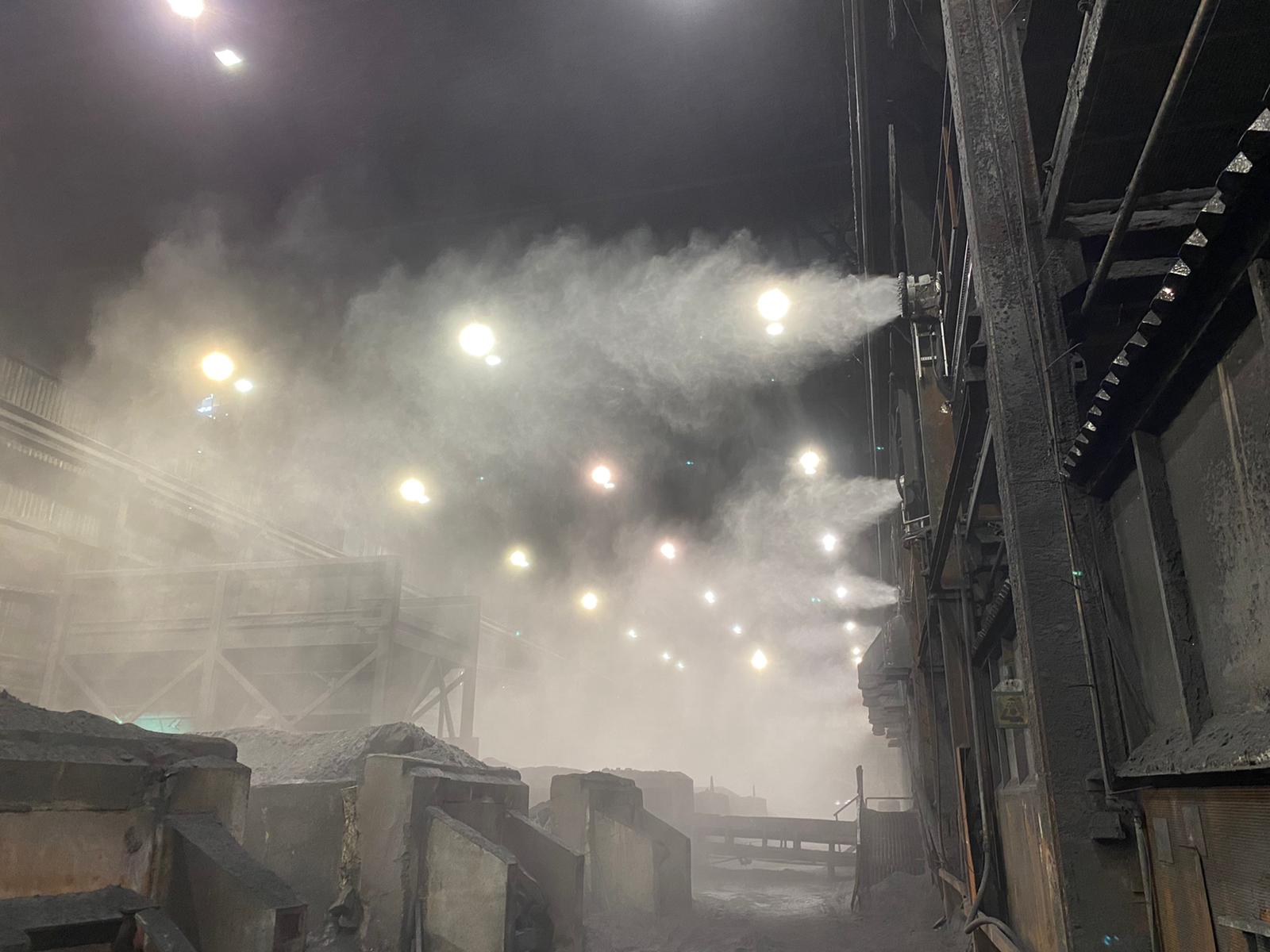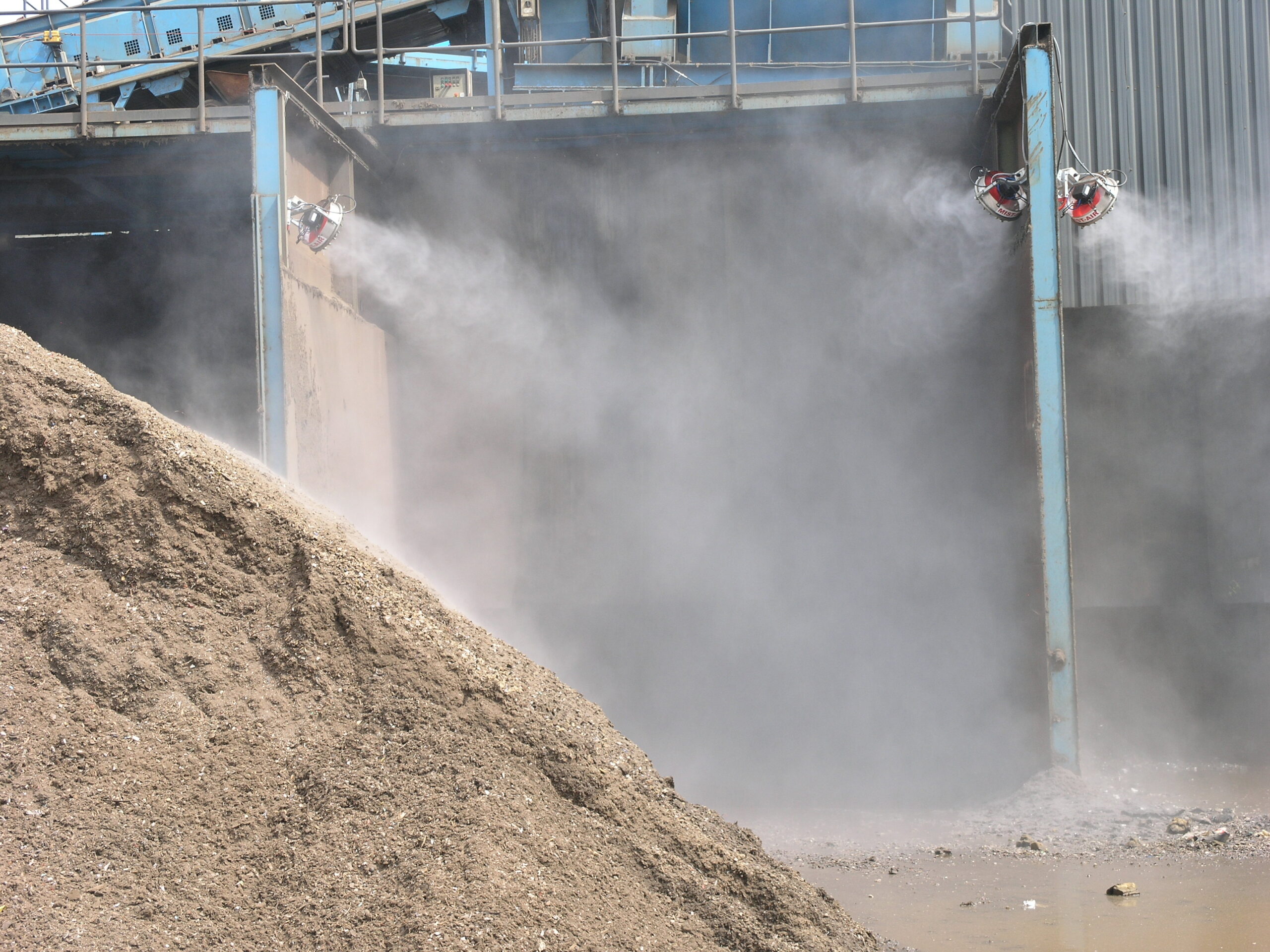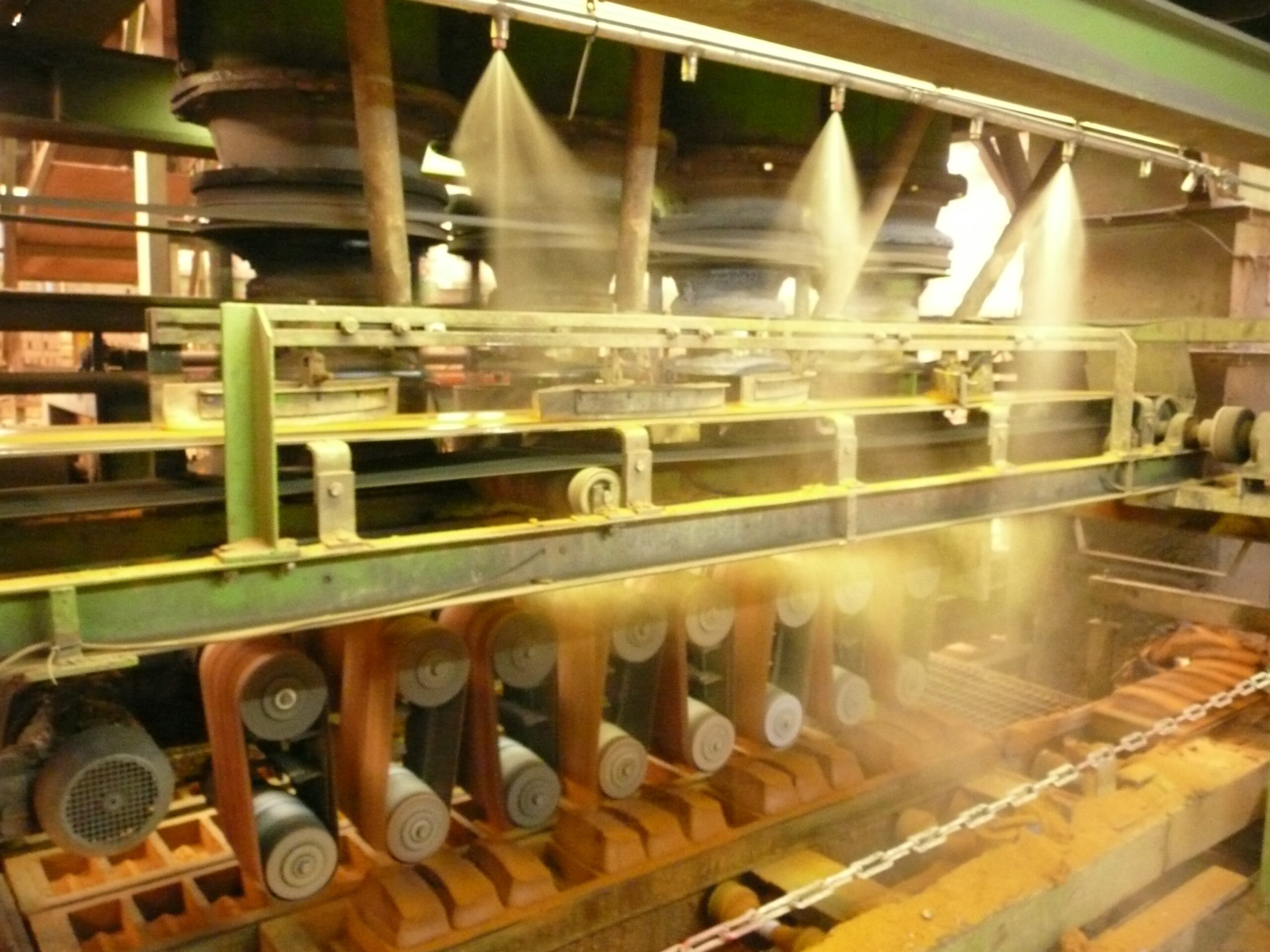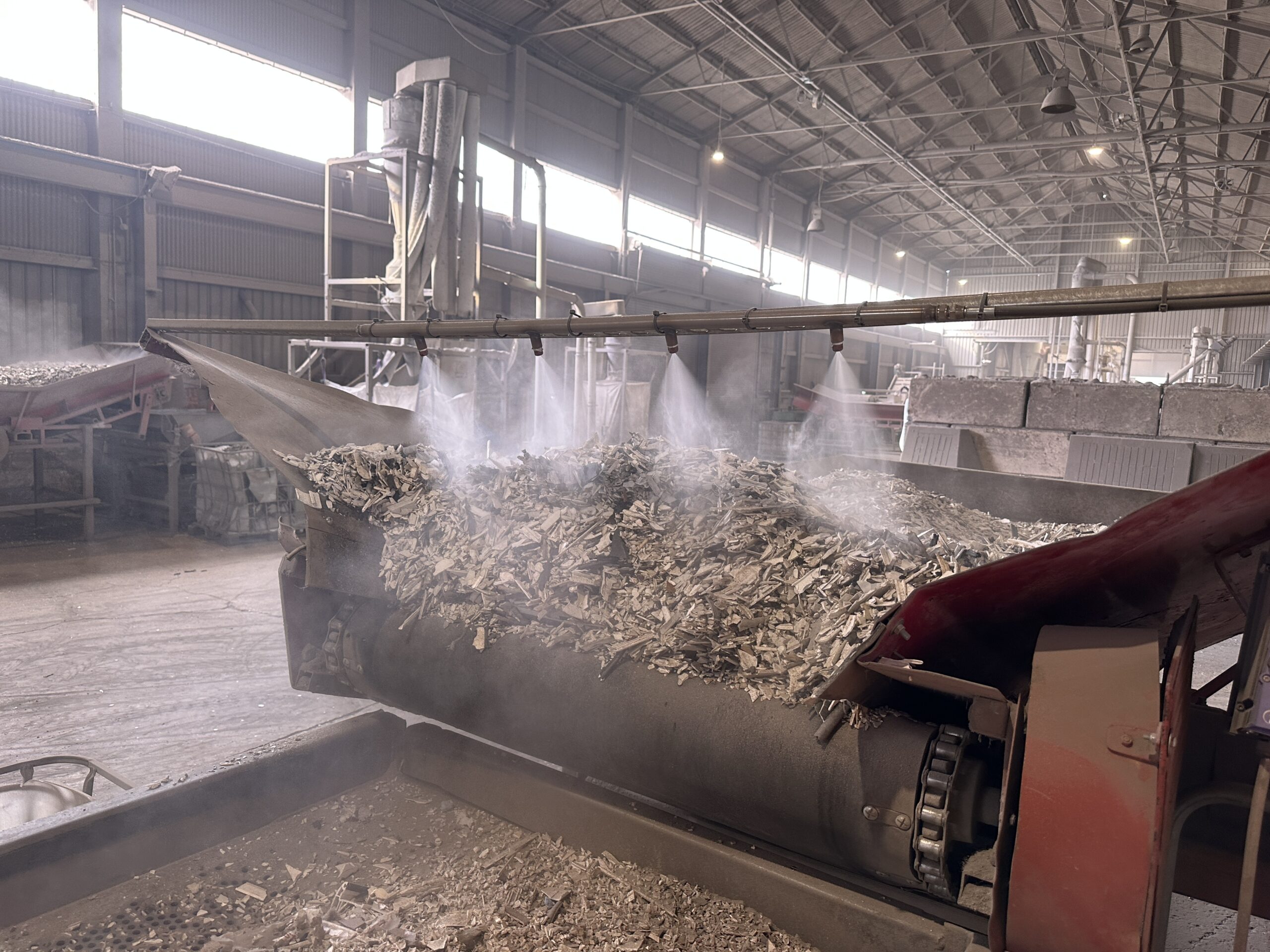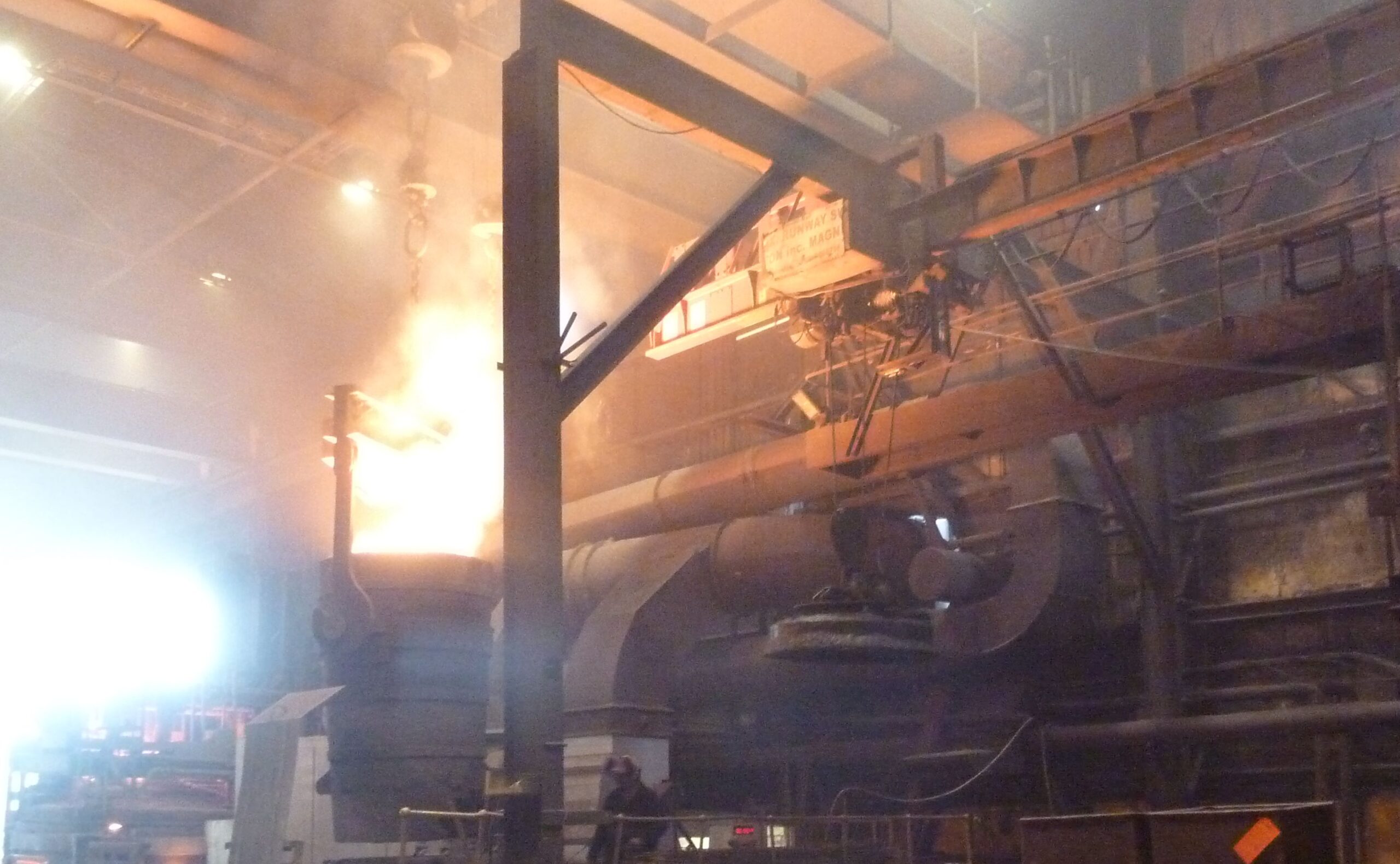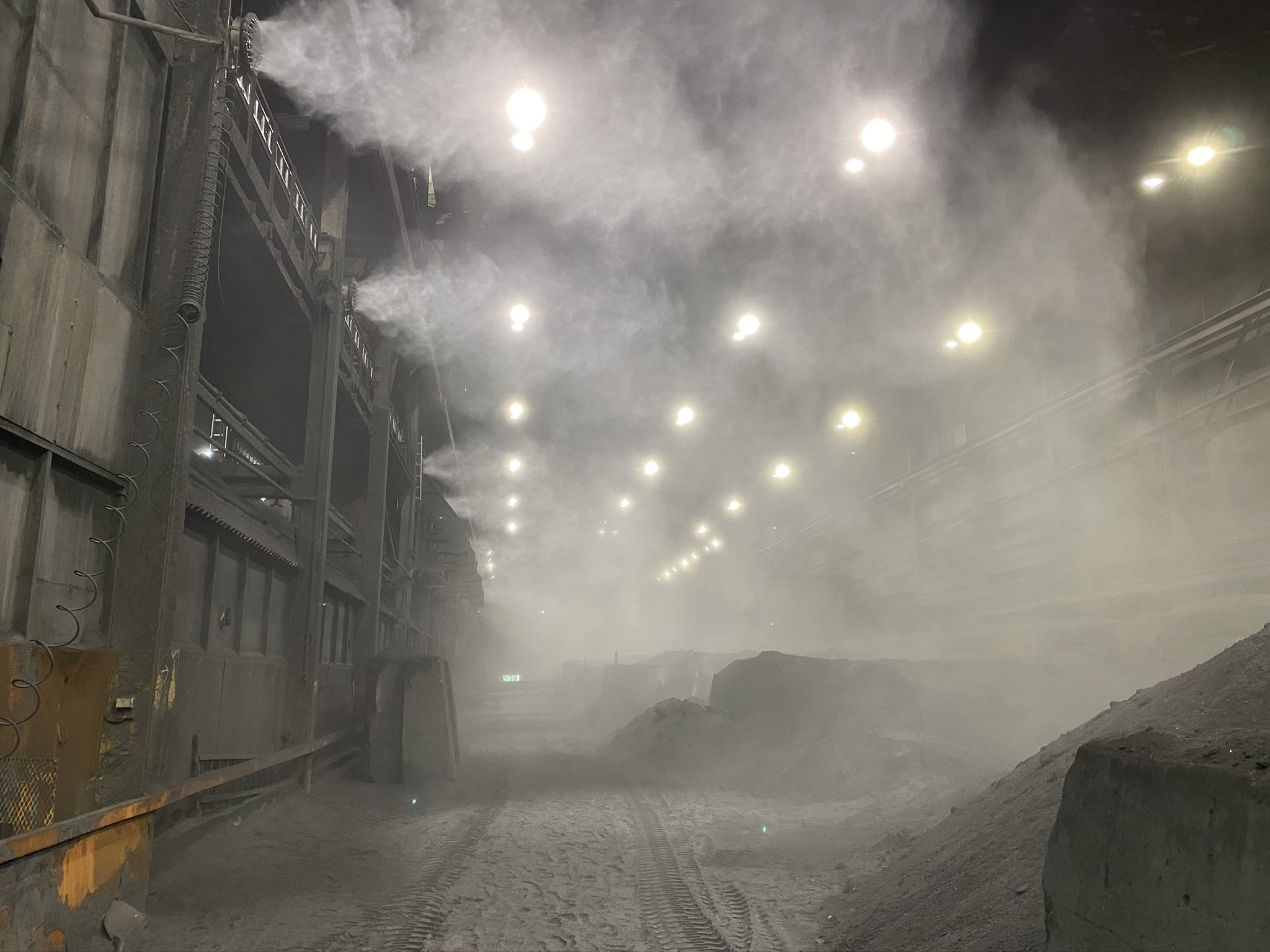Dust Suppression
Industry Dust Suppression Systems
mist-air is a flexible dust and odour suppression system, which can be adapted to suit all sizes of buildings or operations. It is easily fitted to any site and can be retro-fitted to existing operating sites, ensuring a dust and odour free environment.
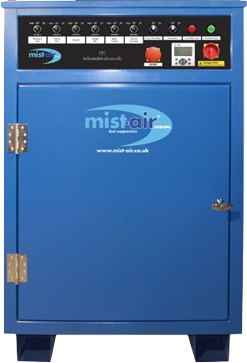

The Unique mist-air Dry Mist Dust Suppression System
mist-air has the flexibility to suppress dust and odours in areas where extraction is simply not possible or affordable.
Currently mist-air is used in thousands of manufacturing and recycling applications, suppressing dust from wood, brick, soil, cement, paper, gypsum, ash, glass, biomass, coal, etc. using only atomised water.
Not to be confused with lines of jets in the roof, mist cannons, Air jets, or Rotary atomisers. Mist-Air have a 40 year proven track record of satisfied customers using a dust suppresion system that is effective, controlable and reliable with a 20 year corrosion warranty.
Extremely fine mist is blown into an ever expanding cloud by stainless steel fans into the air, suppressing rising dust and preventing it from becoming airborne.
Dust particles are attracted to the mist, causing them to settle, and prevent them from staying airborne, so is ideal for preventing dust created during tipping, hopper loading, shredding, trommels, screens, air knives, conveyor transfer points, bulker loading etc. Floors, machinery and stock, stay completely dry and personnel can work in the mist without becoming wet.


The Unique mist-air Dry Fog Dust Suppression System
mist-air has the flexibility to suppress dust and odours in areas where extraction is simply not possible or affordable.
Currently mist-air is used in thousands of manufacturing and recycling applications, suppressing dust from wood, brick, soil, cement, paper, gypsum, ash, glass, biomass, coal, etc. using only atomised water.
Not to be confused with lines of jets in the roof, Fog cannons, Air jets, or Rotary atomisers. Mist-Air have a 40 year proven track record of satisfied customers using a dust suppresion system that is effective, controlable and reliable with a 20 year corrosion warranty.
Extremely fine fog is blown into an ever expanding cloud by stainless steel fans into the air, suppressing rising dust and preventing it from becoming airborne.
Dust particles are attracted to the fog, causing them to settle, and prevent them from staying airborne, so is ideal for preventing dust created during tipping, hopper loading, shredding, trommels, screens, air knives, conveyor transfer points, bulker loading etc. Floors, machinery and stock, stay completely dry and personnel can work in the fog without becoming wet.
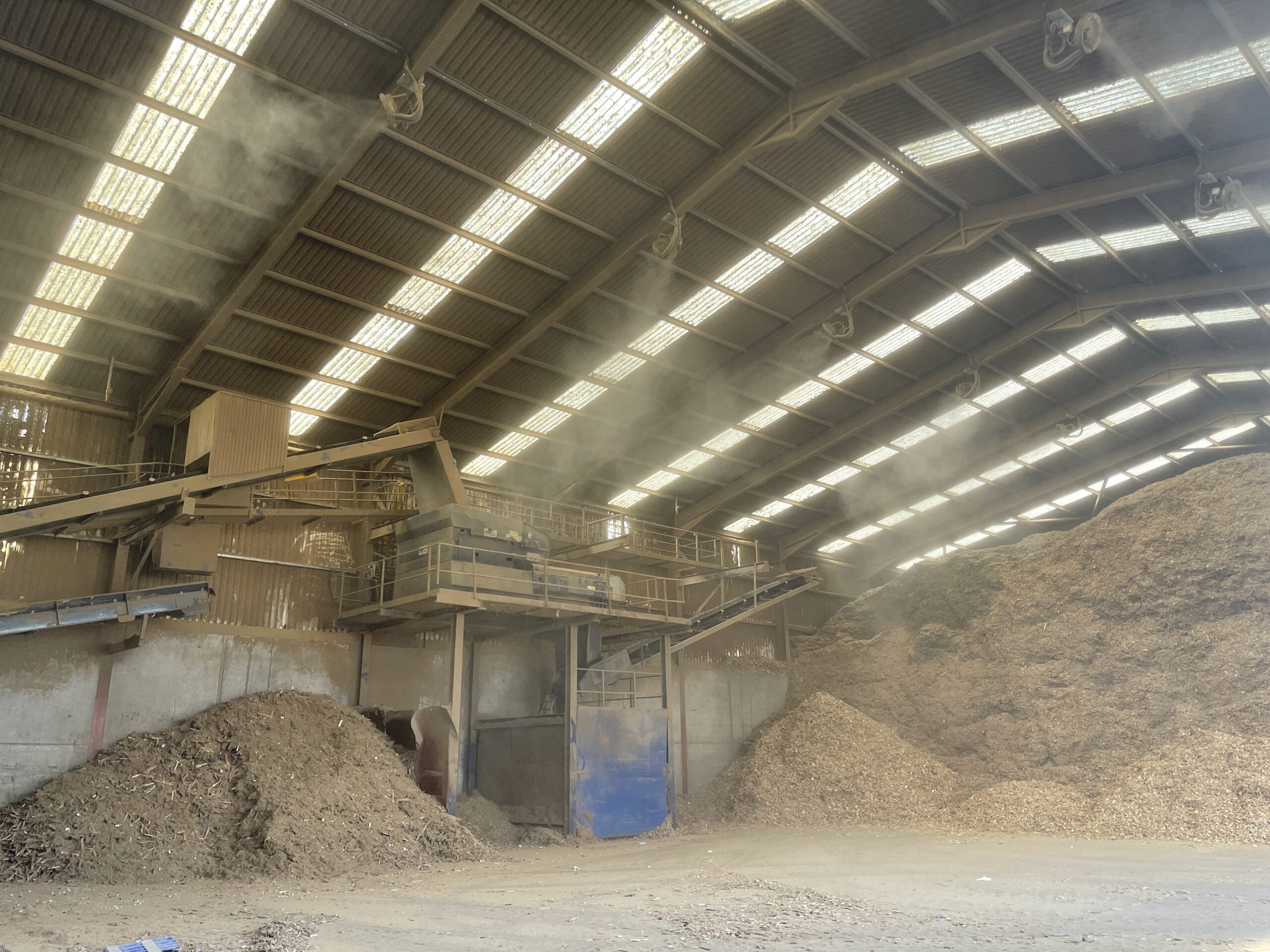
Improving airflow and removing harmful dust is essential for a healthy workplace
Dust suppression systems offer significant advantages for a variety of industries, improving workplace safety, environmental compliance, and overall operational efficiency. Here are some of the key benefits:
- Improved Air Quality: Drastically reduces airborne dust particles, promoting healthier working conditions for employees and surrounding areas.
- Compliance with Regulations: Helps businesses meet local and national environmental regulations, avoiding fines and sanctions.
- Enhanced Safety: Minimises dust-related hazards, such as silica and explosions in high-risk industries, by controlling the amount of dust in the air.
- Equipment Longevity: Reduces the wear and tear on machinery and equipment by preventing dust accumulation, leading to fewer breakdowns.
- Cost Savings: Decreases the need for extensive cleaning and maintenance efforts, saving time and money in the long run.
- Boosted Productivity: Improves visibility and air quality on-site, allowing workers to perform their tasks more efficiently.
- Costs: Installed at a fraction of the cost of extraction systems.LEV Electricity running costs are approximatley 6% of an average small extraction system, and maintenance is minimal.
Analysis by mist-air
Analysis by
mist-air
A dust suppression analysis is a process in which business owners gain a clear understanding of the impact of dust on their operations and how controlling it can enhance safety, compliance, and efficiency. Engineers, environmental specialists, and safety professionals often conduct this analysis for both for-profit and nonprofit organizations.
- Objective: Identify the sources and causes of dust emissions in various environments (industrial, mining, construction sites).
- Dust characterization: Analyzing the type of dust particles, including their size, composition, and potential health or environmental impact.
- Emission sources: Identifying primary areas where dust is generated, such as material handling, transportation, and processing areas.
- Environmental monitoring: Using sensors and equipment to monitor dust levels in the air, including real-time data collection and analysis.
- Regulatory compliance: Ensuring dust suppression techniques meet local, national, or international environmental regulations, particularly with airborne respirable silica.
- Control measures: Evaluating the effectiveness of various dust suppression methods, such as water spraying, chemical dust suppressants, or mechanical systems.
How We Help Different Sectors
Reliable Dust Control in Mining Operations
Dust generated from crushing, screening, conveying and stockpiles., can cause serious health and safety hazards. Our rain guns deliver dependable dust control for large mining sites.
- Increased Equipment Lifespan: Reduces dust infiltration into mining machinery, lowering the frequency of breakdowns and extending the lifespan of equipment.
- Improved Visibility: Maintains clear sightlines for operators, reducing the risk of accidents in dusty environments.
- Regulatory Compliance: Assists mining operations in adhering to stringent dust control regulations, ensuring the safety of workers and surrounding communities.
Dust Suppression in Foundries
In foundries, dust suppression is essential for controlling airborne particles generated during metal casting processes. Effective dust control enhances workplace safety, improves air quality, and protects both workers and equipment. By reducing dust levels and ambient temperatures foundries can prevent health hazards, extend the lifespan of machinery, and maintain compliance with safety regulations.
- Enhances Workplace Safety: Reduces the risk of respiratory problems and accidents caused by dust exposure.
- Improves Air Quality: Decreases the concentration of airborne dust, creating a healthier working environment.
- Protects Equipment: Minimizes dust buildup on machinery, which can reduce maintenance needs and extend equipment life.
- Ensures Regulatory Compliance: Helps meet occupational health and safety standards, avoiding potential fines and penalties.
- Boosts Efficiency: Prevents dust from interfering with production processes and improves overall operational efficiency.
Dust Suppression in Manufacturing
In manufacturing, dust suppression is vital for maintaining a clean and safe work environment. Effective dust control reduces airborne particles produced during various production processes, which can otherwise lead to health risks, decreased equipment performance, and regulatory challenges. By managing dust, manufacturers can enhance worker safety, improve product quality, and ensure smoother operations.
- Improves Worker Safety: Reduces exposure to harmful dust, minimizing the risk of respiratory issues and other health problems.
- Enhances Product Quality: Prevents dust contamination of products, leading to higher quality and consistency.
- Protects Equipment: Reduces dust accumulation on machinery, which can lower maintenance costs and extend equipment lifespan.
- Boosts Operational Efficiency: Keeps production areas clean, which can improve workflow and reduce downtime caused by dust-related issues.
- Ensures Compliance: Helps meet environmental and safety regulations, avoiding potential fines and legal complications.
Dust Suppression in Biomass Facilities
In biomass facilities, dust suppression is crucial for managing the dust generated from handling and processing organic materials. Effective dust control enhances safety, protects equipment, and ensures compliance with environmental regulations. By controlling dust, biomass operations can reduce fire and explosion risks, improve air quality, and maintain efficient and reliable production processes.
- Reduces Fire and Explosion Risks: Minimizes the risk of dust ignition and explosions, which are significant hazards in biomass processing.
- Enhances Air Quality: Lowers the amount of airborne dust, creating a healthier environment for workers.
- Protects Equipment: Prevents dust from accumulating on machinery, reducing wear and tear and extending equipment lifespan.
- Improves Efficiency: Keeps production areas clean and free from excessive dust, leading to smoother operations and less downtime.
- Ensures Regulatory Compliance: Helps meet environmental and safety standards, avoiding potential fines and ensuring adherence to best practices.
Case Studies & Knowledge Base
Contact Us
At mist-air, we’re committed to helping you find the perfect dust suppression solutions for your needs. Whether you have questions about our products, need assistance with installation, or require support for ongoing maintenance, our dedicated team is here to help. Reach out to us via phone, email, or the contact form below, and one of our knowledgeable representatives will get back to you promptly. We look forward to assisting you in creating a safer, cleaner, and more efficient environment.

